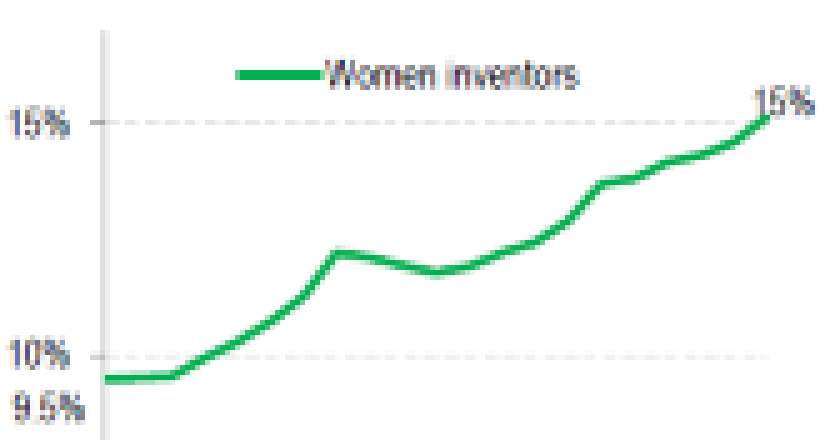
At the start of the year, the United Nations General Assembly launched the 2030 Agenda for Sustainable Development which includes plans to promote gender equality and the empowerment of women. As a specialised agency of the United Nations, WIPO has joined this effort, committing to address gender inequality in intellectual property.
Speaking at the IP Statistics for Decision Makers 2016 conference, WIPO Director General Francis Gurry said: “These new, global data give us a baseline for understanding the role of gender in the filing of international patent applications, which is one metric used in measuring a country’s innovative capacity. These data prove that a gender gap exists and it needs to be addressed.”
Gender analysis of PCT applicants
In 2015, researchers found that “less than one-third of all international patent applications include women inventors and only one out of seven inventors is a woman”.
On average, the proportion of women inventors represents an annual growth rate of 12.5%, while the number of male inventors has been increasing at an average of 9.5% each year. At this rate, it is estimated that it will take “no less than 64 years to reach a balanced gender distribution of inventors”.
While figures suggest that women are more engaged in patent filing than they were in 1995, the study highlights a persistent gap between male and female inventors. The report reads: “In 2015, less than 15% of PCT applications with women participation were filed amongst women only, while roughly three-quarters of those with men participation were filed amongst men only.”

The proportion of PCT applications filed with only women inventors remains very small at just 4.3%, which is almost twice the proportion of women-only inventors filing in 1995. The biggest gender gaps were found among top countries for PCT filing such as Germany, Japan, Italy and South Africa.
Variations by country
The report explores data from a range of UN countries, helping to illustrate gender participation in patent filing on an international scale. While the report does not cover all countries, it shines a light on countries that are performing well in gender equality.
While the majority of PCT filing is concentrated in a few countries, WIPO’s Julio Raffo says that there is a lot to learn from analysing data in this sample area.
Raffo, one of the report’s authors, says: “There is some evidence about who is doing better in gender participation. Some countries known for gender balance, surprisingly didn’t do as well in the statistics. Other countries that you could consider middle income or less industrialised, you are expecting them to do worse, but they do better.”
In 2015, with a share of international patent applications with at least one woman inventor at 50%, the Republic of Korea topped the list and China followed at 49%, making them leaders for gender equality in international patenting via the PCT.

Other leading countries include Poland (40%), Spain (35%) and Singapore (34%) while the US, the largest user of the PCT system, lagged behind with a share of 29% for the period 2011-2015.
Brazil and Mexico, considered as middle income countries, appeared to have “marginally better gender balance” in international patenting compared to some high-income countries such as Canada, Denmark and Finland.
Future studies
One major challenge of the study, researchers note, was the availability of gender-specific data on an international scale. WIPO officials generated a world gender-name dictionary using sources from over 170 countries to aid the identification of inventors.
The report also considered that the proportion of women participating in patent filing is not equally distributed. With a lower proportion of women in patenting, Germany, the US and Japan have been marked as a key countries for tracking the progression in gender balance.
It was also suggested that there is lot to be gained from extending the analysis of gender participation in patent filing to other areas of intellectual property.
A focal point of the study pointed to five technological fields in which gender balance is seeing the fastest rate of improvement.
Between 1995 and 2015, the gender gap in digital communication and telecommunication narrowed by 27 and 21 percentage points respectively. Food chemistry and organic fine chemistry and other consumer good categories were also named as fields in which there was greater evidence of gender balance.
Overall, it was found that technologies related to engineering had less women participation than life science industries.
Raffo notes: “It seems that academic patenting or patenting by universities or public research organisations is more gender balanced than the private sector.” He suggested that could be an opportunity to “dig deeper” into these results, to distinguish the technological and industrial specialisations reflected in the industry, in comparison to the academic sector.
You can read WIPO’s full study on the gender of PCT inventors here.









